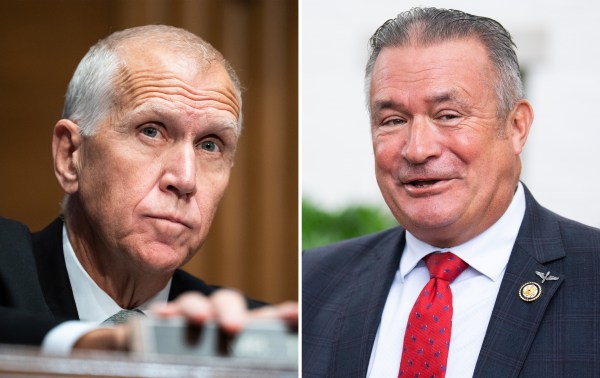Colleges and universities face daunting decisions in how to proceed with the fall semester. Princeton has opted to split the academic year, with freshmen and juniors on campus in the fall, and sophomores and seniors attending in the spring. Harvard announced that all instruction would be online, though some students will be allowed on campus. Now comes another complicating factor. Thanks to a new policy from the Trump administration, administrators who decide online-only education is what’s right for their campus could be forced to either abandon what they had deemed their best practices or put their international students in danger of deportation.
On July 6, U.S. Immigration and Customs Enforcement (ICE) announced that it will not grant continued visa exemptions to international students—a change from this spring, in the early days of the COVID-19 outbreak—allowing them to stay in the U.S. even if their courses switch to online education.
Per ICE, this means that this fall, international students at universities with no in-person instruction will be forced to “depart the country or take other measures, such as transferring to a school with in-person instruction to remain in lawful status. If not, they may face immigration consequences including, but not limited to, the initiation of removal proceedings.”
In the aftermath of the announcement, voices on both the left and right decried the move as cruel. Meanwhile, acting Deputy DHS Secretary Ken Cuccinelli admitted in a television interview that the Trump administration’s real motive here is to push colleges to reopen for in-person education. That political dispute aside, ICE offered no economic justification for the policy change in its memo, and there is no apparent benefit to the U.S. that has been clearly articulated by supporters so far. However, international students could suffer greatly. Many of them come from countries with serious problems, and returning home could disrupt their ability to complete their education—or even endanger their safety.
“The new guidelines were beyond heartbreaking,” Venezuelan-born international student Raul Romero told me. “Currently, my school has announced it will resume classes physically, but if they were to be canceled due to an uptick in COVID-19 cases, I would only have 10 days to leave the country. Going [back to] Venezuela … I will suffer from slow internet, constant shortages, and lack of access to water and other basic needs.”
“I would [go] from [having] an ensured meal at the school cafeteria to [waiting in] long lines to attempt to find enough food to eat,” he said.
For Ayush, an Indian international student and senior computer science major who spoke to The Dispatch, this problem isn’t hypothetical. The large New England public university he attends has already announced its plans to go online-only in the fall, meaning the new ICE rule puts Ayush, and others like him, in a serious bind.
“I came to the U.S. when I was 17,” Ayush told me. “A computer science education in India would have cost me about $10,000 U.S. for four years vs the $200,000 U.S. international students are required to pay at [my university], but I was keen to come to [America for opportunity].”
ICE just put the degree Ayush has sacrificed so much for in jeopardy.
“You want to continue studying at the university you invested your last three years and $100,000 in?” he asked. “Well, you better find a way to tell them to open up during COVID, or else we are sending you back. India has closed its international borders. Europe has closed its borders to the U.S., China has closed its borders.”
“I now need to risk my life to fly back and go through extremely crowded areas like airports and figure out a way to get into a country that is not taking anyone in,” Ayush said. “My other option is to beg my university to open up and start an in-person class where the students, professors, and I can continuously risk our lives to deal with this nonsensical regulation.”
Romero and Ayush would hardly be the only international students who would struggle to continue studying if forced out of the U.S. The vast majority of international students studying in the U.S. hail from either China or India. And Chinese students would be returning to harsh censorship and control of the internet. It’s hard to see how they could complete their studies in a country that bans Google.
Indian students, meanwhile, might fare better in regards to censorship, but they still would be sent back to a country ravaged by poverty and forced to attend live classes with a nearly 10-hour time gap. To attend a 4:30 p.m. ET class held by an American university, an Indian student would have to sign onto Zoom from their home country at 2 a.m.
ICE’s change doesn’t just disadvantage foreign nationals. Experts say it could hurt American students and the U.S. economy as well.
“We’re talking about tens of billions in dollars in lost economic activity here,” Cato Institute immigration policy analyst David J. Bier told me. “All of these students are supporting themselves while they’re here, so they’re buying food, purchasing housing, going to local stories. … All of that economic activity is going to go away if they’re forced to leave the country. [The impact] would be very acute in certain areas that are university towns or university-dominated sectors of certain cities.”
Additionally, Bier says pushing foreign students out will actually hurt, not help, their American peers.
“Anything that’s going to harm their institution is going to harm American students,” he said. “In particular, foreign students are almost always paying full tuition, which means paying four or five times the tuition that U.S. students are paying … so they are subsidizing the education of American students. This restriction could potentially result in fewer foreign students paying tuition and higher tuition [for American students].”
Higher education is simply not a zero-sum game, and academic research has documented this trend at length. For example, one paper found that for every 10 international students admitted to U.S. colleges and universities, schools were able to admit eight additional American students thanks to the subsidization of high international tuition rates.
It’s not clear who wins under this new ICE policy—but many aren’t happy about it. And critics are making their voices heard.
“This is shameful,” said American Enterprise Institute director of economic studies Michael Strain. “It is cruel. And if the Trump administration succeeds in its overall goal of stopping many of the most talented and hardest working people in the world from wanting to come to the U.S., we will all soon wish it had failed.”
Brad Polumbo (@Brad_Polumbo) is a freelance journalist and contributor to The Dispatch.
Photograph by Anik Rahman/NurPhoto via Getty Images.






Please note that we at The Dispatch hold ourselves, our work, and our commenters to a higher standard than other places on the internet. We welcome comments that foster genuine debate or discussion—including comments critical of us or our work—but responses that include ad hominem attacks on fellow Dispatch members or are intended to stoke fear and anger may be moderated.
With your membership, you only have the ability to comment on The Morning Dispatch articles. Consider upgrading to join the conversation everywhere.